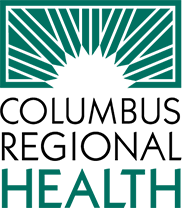The Ins and Outs of Antibiotics
When we are sick, we all dream of a magic pill that will make us feel better quickly. For decades, antibiotics have been that “magic pill,” treating illnesses and saving lives. But, did you know that unnecessary use of antibiotics has led to the biggest public health challenge of our time?
According to the Centers for Disease Control and Prevention, each year in the United States at least 2 million people get an antibiotic-resistant infection and more than 23,000 people die because of these infections. Antibiotic resistance occurs when bacteria no longer respond to the drugs designed to kill them.
Antibiotics are among the most commonly prescribed drugs used in human medicine. However, up to 50 percent of all the antibiotics prescribed for people are not needed or are not optimally effective as prescribed.
Common misconceptions
Antibiotics do not work on viruses, such as colds and flu, or runny noses, even if the mucus is thick, yellow, or green. Antibiotics are only needed for treating certain infections caused by bacteria. Antibiotics also won’t help for some common bacterial infections including most cases of bronchitis, many sinus infections, and some ear infections.
“Although, it can be extremely inconvenient to be sick or have a sick child, taking an antibiotic for a virus will not make you or your child feel better any faster and may cause harm if not needed,” said Annie Stock, PharmD, BCPS-AQID, Columbus Regional Health Clinical Pharmacy Specialist and Infectious Diseases Antimicrobial Stewardship Program Coordinator. “Unfortunately, most of the time antibiotics are not a ‘quick fix’ in a world that expects quick fixes and they should not be used ‘just in case.’”
Stock and other members of the Antimicrobial Stewardship Program work to educate staff, providers, patients and the public on appropriate antibiotic use.
The more we use antibiotics, the more we contribute to the pool of antibiotic-resistant microbes. The development of resistance is an inevitable byproduct of exposure to antibiotics. All antibiotic use, whether warranted or not, places selection pressure on bacteria, and some organisms that possess genetic mutations will survive antibiotic treatment.
When asked, many healthcare providers share that even though they realize antibiotic resistance is a concern, that they sometimes prescribe antibiotics to patients even when they may be unnecessary because patients expect an antibiotic to feel better.
"Sometimes, patients may even become frustrated or angry with their providers if they feel that they or their child need an antibiotic and the provider will not prescribe one,” Stock said.
“Again, this speaks to the belief that many people have that you always need an antibiotic to feel better. Thus, the importance of reaching out to the public to help debunk this misconception and improve communication between patients and their healthcare providers.”
Awareness for change
Over time, resistance threatens to return us to an era where simple bacterial infections will once again be deadly. World health leaders have described antibiotic-resistant microorganisms as “nightmare bacteria” that “pose a catastrophic threat” to people in every country in the world.
Each year in November, the CDC and numerous health care partners host U.S. Antibiotic Awareness Week to raise awareness about the threat of antibiotic resistance and the importance of appropriate antibiotic prescribing and use.
Improving the way healthcare professionals prescribe antibiotics, and the way we take antibiotics, helps keep us healthy now, helps fight antibiotics resistance, and ensures that these life-saving drugs will be available for future generations.

CRH News
-
Final Two CRH Practices Move to NexusPark
Apr 18, 2024, 12:36 PM by DeClue, A.CRH at NexusPark officially opened in late January, and more than 15 provider practices and services have relocated to the space in the first quarter of 2024.Full story -
Wound Center Receives National Awards
Apr 3, 2024, 15:21 PM by DeClue, A.The Wound Center achieved outstanding clinical outcomes for twelve consecutive months, including a patient satisfaction rate higher than 92 percentFull story -
CRH conducting independent public health survey
Mar 26, 2024, 12:41 PM by DeClue, A.Columbus Regional Health is conducting a Health Status Survey by telephone and online from March through May.Full story -
Columbus Regional Health offers new online health portal for expectant parents
Mar 25, 2024, 14:21 PM by DeClue, A.With CRH’s new My Pregnancy Journey, patients can use their computers or mobile devices to review digital prenatal education from a trusted source and track important decisions and tasks that need to happen at specific pregnancy milestones.Full story -
Additional Medical Practices Move to NexusPark
Mar 25, 2024, 11:24 AM by DeClue, A.More practices and services relocate to NexusPark facility.Full story -
Eclipse office hours for CRH-affiliated services
Mar 21, 2024, 14:01 PM by Laker, J.Office hours for CRH-affiliated practices and service lines for the April 8, 2024, Total Solar Eclipse.Full story

